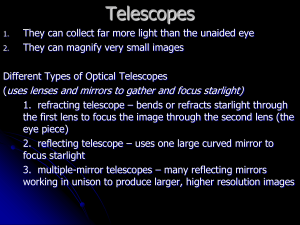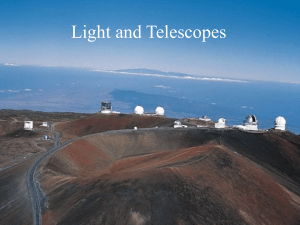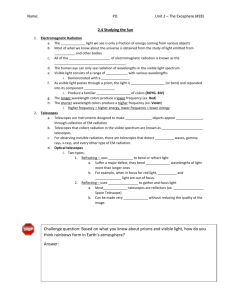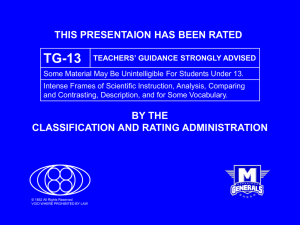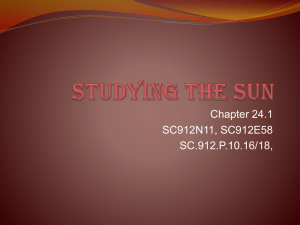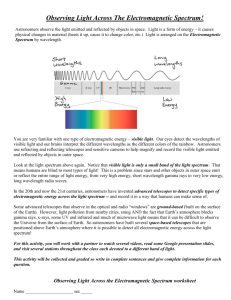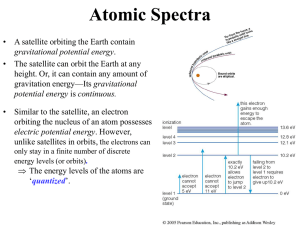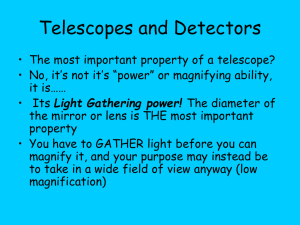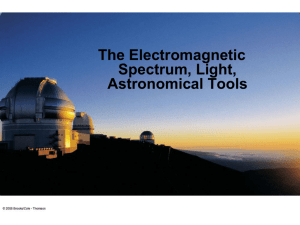section 3-1(rev04)
advertisement
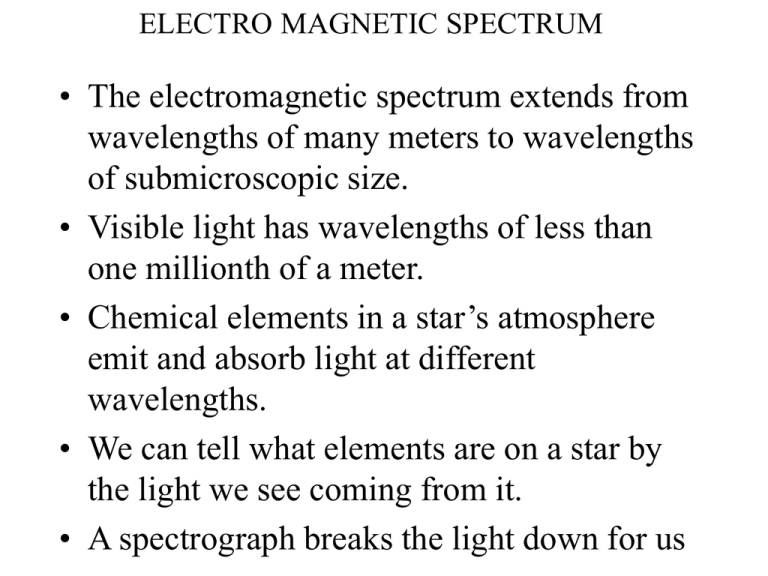
ELECTRO MAGNETIC SPECTRUM • The electromagnetic spectrum extends from wavelengths of many meters to wavelengths of submicroscopic size. • Visible light has wavelengths of less than one millionth of a meter. • Chemical elements in a star’s atmosphere emit and absorb light at different wavelengths. • We can tell what elements are on a star by the light we see coming from it. • A spectrograph breaks the light down for us a simple spectrograph top: continuous spectrum bottom: emission spectrum Emission spectra of some of the elements Absorption spectra are produced when a substance such as an element or a colored liquid is placed in front of a full spectrum light source; the element will absorb some of the light and let some of it pass through. Which colors does hydrogen absorb? The next slide shows emission spectra on top and absorption spectra underneath. Compare the emission spectrum of helium (top), with its absorption spectrum (bottom) absorption spectra Emission spectra TOOLS OF MODERN ASTRONOMY How do we find what stars are made of? • First we need to improve our eyesight. We do this by using telescopes. • There are telescopes that detect visible light and those that detect light outside the visible range. • There are two type: Refracting and Reflecting. TELESCOPES THAT USE VISIBLE LIGHT • The reflecting telescope bounces the light from the object off a concave mirror and focuses it in the eye or camera . • The refracting telescope uses a convex lens to bend the light from the object and focus it in the eye or camera . • Most visible light telescopes are reflecting telescopes. • Other telescopes use wavelengths of the spectrum that are not visible. • Radio telescopes use radio waves which are very long. Don’t forget that stars produce all kinds of radiation, including radio waves. The larger the radio telescope, the more waves it can detect and the better the image will be. • There are telescopes that detect short wavelengths like xrays and gamma rays. So some images are the result of xrays that were emitted by the star and captured by an x-ray telescope. • Earth based telescopes use visible, ultra-violet, infra-red, or radio waves because the atmosphere does not block them, unlike the shorter wavelengths such as x-rays. • Telescopes in space have opened up more possibilities because they can use shorter wavelengths. The Hubble telescope (top) and the VLT (bottom) Yerkes: the largest refracting telescope (40 inch diameter) (a) Mona Koa is 4-km above sea level. The air is so thin that astronomers wear oxygen masks. (b) the 10-m mirror of Keck1. Photo (a) was taken with a telescope half the diameter of (b). Which has more detail? Arecibo has a dish with a diameter of 305 m to detect radio waves Focal point Radio (top) compared with optical image of spiral galaxy M51 Crab nebula: visible light Crab nebula: radio waves

